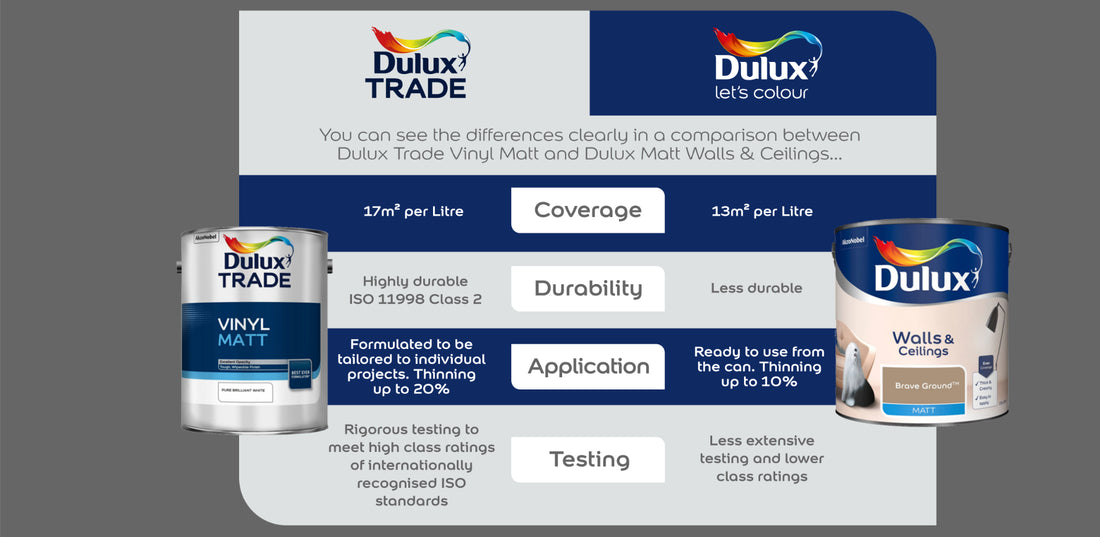
Trade Paint vs Retail Paint - What's the Difference?
Share
Brushing Up: The Trade-Off Between Trade and Retail Paint
Introduction
Definition of Trade Paint
Uses of Trade Paint
Definition of Retail Paint
Uses of Retail Paint
Conclusion
Introduction
Welcome to this presentation about the differences between trade and retail paint. Understanding these differences is important because it can help you make informed decisions when choosing the right type of paint for your project.
Trade and retail paints may look the same, but they have different properties that make them suitable for different applications. Both come with pros and cons. In this blog, we will explore the characteristics and uses of both types of paint.
Definition of Trade Paint
Trade paint is a type of paint that is specifically designed for professional use. It is typically sold in larger quantities than retail paint and is formulated to be more durable and long-lasting. Trade paint is also known for its high coverage and opacity, which means that it can cover imperfections and blemishes on surfaces more effectively than retail paint and the same amount of paint will cover a larger area than the equivalent retail paint. It will always generally be more durable and long lasting than the retail equivalent.
Trade paint is commonly used in commercial and industrial settings, such as warehouses, factories, and offices. It is also used by professional painters and decorators who need a reliable and high-quality paint for their projects.
Uses of Trade Paint
Trade paint can be used anywhere and generally there will be a trade paint available to suit any project you would undertake even as a DIY painter.
Another advantage of trade paint is that it comes in a wide range of colours and finishes, including gloss, satin, and matt. This makes it easy to find a paint that matches your specific needs and preferences.
Definition of Retail Paint
Retail paint is a type of paint that is sold to consumers for DIY projects. It is generally available in smaller quantities than trade paint and is formulated to be easier to apply and clean up. Retail paint also tends to be less expensive than trade paint, making it a popular choice for home projects.
Retail paint is available in a wide range of colours and finishes. However because retail paint is generally ready mixed to set shades your choices on which colour you can select in a particular product are normally more limited. It is also available in specialty formulas, such as low-VOC and eco-friendly options.
Uses of Retail Paint
Retail paint is ideal for smaller-scale projects or for those who are decorating on a budget. Retail paint is easy to apply and generally dries quickly, making it a convenient choice for DIYers.
However bare in mind the lower price of retail paint can come with some dowsides. Because it does not generally cover as well as trade paint or go as far it may be that you have to purchase more to complete your painting project. Or if you have to apply an extra coat because the opacity is not as good that will take more time.
Conclusion
In conclusion, understanding the differences between trade and retail paint can help you make informed decisions when choosing the right type of paint for your project.
Generally Trade quality paint will be superior but here at Painters Paradise we offer both choices to allow our customers ultimate convenience you can get both trade and retail paints from the same place. No more trips to multiple outlets to get the materials you need.
Even professional decorators may need to use retail paints at times. For example we would always recommend if a job has been started with one type then you should always finish with the same to avoid what can sometimes be significant differences in shade or finish.
If you need any more advise on choosing between trade and retail paint reach out to our experts today for specific advise on your project.
